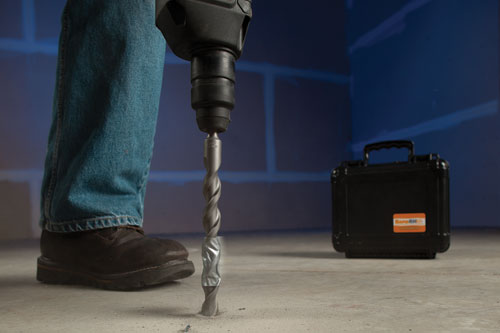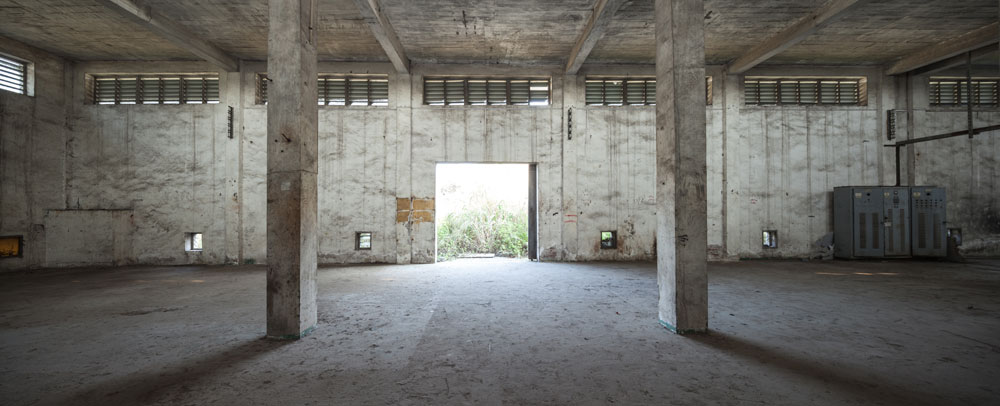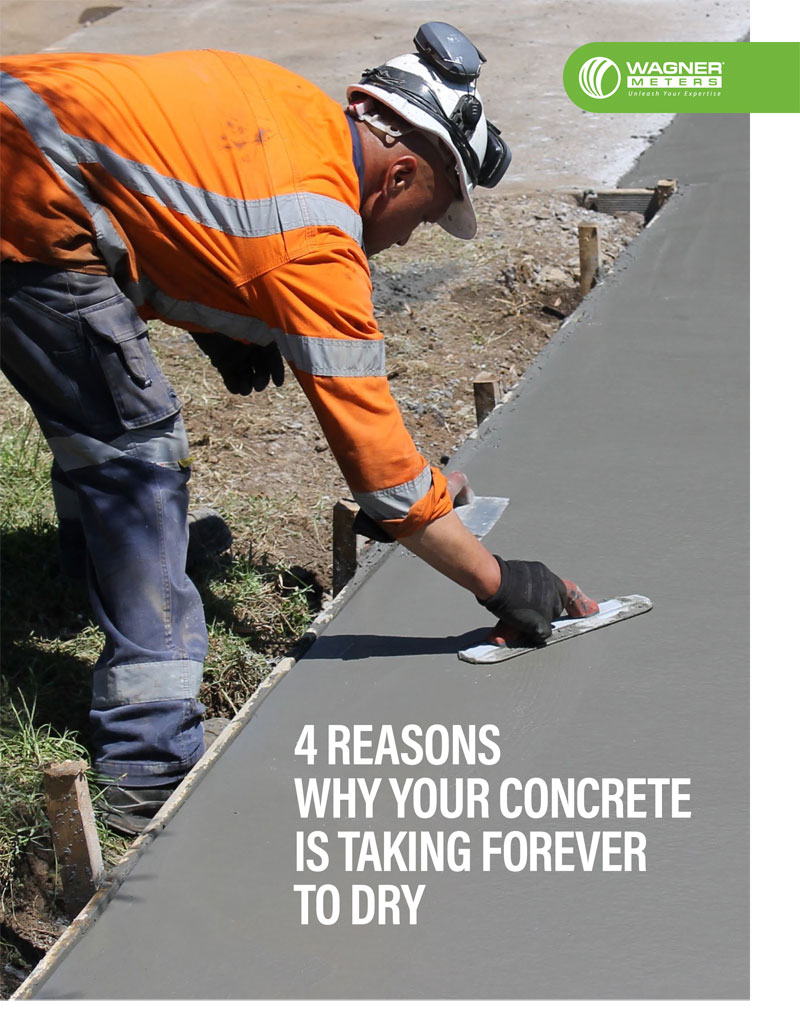3 Key Lessons about Moisture from an Old Concrete Floor
Customers often inquire about how to respond to the results of their concrete moisture tests, especially when they’ve used more than one testing method. Why? Because different concrete moisture tests often return conflicting results, leaving contractors unsure how to proceed. This can be especially true when testing older concrete floors where the contractor may have little idea of what was done when the concrete was originally poured.
A story recently shared by one customer illustrates perfectly the pitfalls of using less reliable moisture testing methods as well as the challenges of testing older concrete floors. In this case, our customer was tasked with addressing a wet basement with a concrete floor that’s at least ten, possibly 20 years old.
After sharing this customer’s experience, we will dig into three key lessons:
- Why the in situ relative humidity (RH) test is so much more accurate than any surface-based test;
- Why old slabs may need an investigation into whether a vapor barrier was ever installed and how to go about doing this; and
- The pros and cons related to the use of concrete treatments or other mitigation options.
What Happened in That Basement?
The basement had clearly been accumulating excess moisture. The question for our customer was to determine how much this had impacted the moisture condition of the concrete slab. He brought in humidifiers to address the basement’s wetness. Then, in order to test the moisture condition of the floor slab, he used the surface-based calcium chloride (CaCl) test. Test results indicated very low moisture levels in the old floor. This seemed to defy common sense, given the basement’s wet condition.
To validate the CaCl test results, our customer then conducted an in situ RH test by installing several RH sensors at the recommended 40% depth in the concrete slab. The RH sensors, which were measuring the moisture condition deep within the concrete slab, indicated the floor was holding a high amount of moisture. Now the contractor was even more confused. So he contacted Wagner Meters for some guidance.
What We Can Learn from This Contractor’s Confusion
Bottom line: First, the dehumidifiers drew moisture directly from the slab’s surface. This significantly interfered with the CaCl results since it is a surface-based test and does not assess the moisture condition within the slab. Second, older floors require investigation and a little patience, to determine how to get them to a sufficiently dry state and to verify their moisture condition.
Ambient Conditions Invariably Mess with Surface Testing

By drilling test holes and measuring RH at the depth specified for in situ RH testing, one can accurately assess the moisture condition of a concrete slab.
Surface-based tests, by definition, only take moisture vapor readings at the surface of the concrete. This makes them highly sensitive to the ambient conditions around the slab. And this is one important reason we see inaccurate results from surface-based moisture tests all the time.
The dehumidifiers used by this contractor did their intended job. That is, they pulled moisture out of the air, reducing the humidity. The surface of the slab, in turn, was impacted by the lower humidity in the air, which contributed to low moisture readings using the CaCl test.
The way to avoid inaccurate test results due to ambient conditions is to utilize an in situ RH test to assess the overall moisture condition within the slab—well below the surface. An in situ RH test, such as the very popular Rapid RH® test, is the only proven reliable method for assessing moisture conditions below the slab’s surface.
How to Investigate the State of Old Concrete Floors
The contractor’s original intention was to use the humidifiers to dry out the concrete floor. However, without knowing a bit more about the floor, it can be difficult to know the best steps to take for getting the slab truly ready for the application of a flooring product. If you have access to the original construction records (a big “if”), you may get important information such as slab thickness, or confirmation of the presence or not of vapor barriers.
In this case, the contractor didn’t know whether this old concrete floor had a vapor barrier installed at the time of construction. Without a vapor barrier, one can expect moisture to continually seep into the concrete from below. This means, of course, that no amount of drying time would get the slab to a sufficiently dry condition. Truth be told, depending on the age of the basement floor, an old vapor barrier has possibly started to break down and may no longer be preventing moisture intrusion into the slab. The only way to truly know is by core sampling the slab.
If a core sample is completed and the vapor retarder is deemed to no longer be effective, there are still options for getting a flooring finish installed. One option, in this case, is to use some sort of moisture mitigation system (which is always an option right up front, by making the assumption that the slab lacks a functional vapor barrier).
Moisture Mitigation Options – Timeline and Budget Challenges

For old concrete slabs, the options for moisture mitigation are often limited, due to timeline and budget constraints.
For an older concrete slab, mitigation options can be limited. Here, the contractor had already tried adjusting the ambient conditions (through the use of humidifiers) to accelerate drying, but without success. The only other moisture mitigation option is to apply a topical product on the concrete slab that diminishes the ability for moisture to interact with the installed flooring finish. For jobs where time is the major constraint, applying such products may be the first and best option.
When choosing a mitigation product, one has multiple options, ranging from sheet products that can be rolled out to epoxy coatings. A flooring contractor should take the following factors into consideration when deciding among the options:
- Floor prep needed to properly apply the product. Some may require minimal floor prep while others may need some sanding, and even others may require shot-blasting;
- Any limitations that the new coating may place on the type of finished floor product that can be applied over it;
- Cost of the sealant, from the sealant itself to the labor required to apply it. Sealants can run anywhere from $3 -10 per square foot. No small budget overrun;
- Are there any warranty exclusions for product use on slabs WITHOUT an intact vapor retarder. This is critical when reading warranties.

Free Download – 4 Reasons Why Your Concrete Is Taking Forever to Dry
At the end of the day, the building owner and/or the contractor may need to decide whether they prefer to pay with dollars or time and what level of confidence they need to ensure a successful installation.
Moving Forward
Old flooring and old concrete slabs will always present challenges. The sooner you do in situ RH testing on the old slab, the sooner you’ll have an accurate picture of the slab’s existing moisture condition. If it turns out the slab is too wet, you’ve just bought yourself considerable time and money. That’s because you won’t be expending time, labor and materials on guesswork solutions that may fail.
Originally published in Concrete Construction July/Aug 2019
Jason has 20+ years’ experience in sales and sales management in a spectrum of industries and has successfully launched a variety of products to the market, including the original Rapid RH® concrete moisture tests. He currently works with Wagner Meters as our Rapid RH® product sales manager.
Related Posts via Taxonomies
Last updated on April 4th, 2022




I bought a house built in 1965 with a concrete slab foundation. It has floating vinyl plank flooring throughout. There are a few places where there are crystals that form between the seams that I can easily clean off, but they come back a few months later. When I was doing some work in the half bath, and I had to remove some of the planks, I noticed the concrete was noticeably wet, and not from a leak. Also, there is some efflorescence on the slab that is outside the front door that I am always sweeping away. I know it’s moisture from the slab, but my question is, is this something that is a problem as far as my foundation being stable, or more of a nuisance? I can live with it if it’s just something to expect in this old home. Other than that, the floor is pretty uneven in spots and the person that installed the flooring didn’t level it out at all. Is leveling the floor a do able thing, or is it related to the moisture in the slab?
Jeanne:
Thanks for the questions. First, the moisture shouldn’t cause an issue with the slab, but it could potentially cause some mold and/or mildew problems. As far as “level”, most of the time in relationship to flooring installations we are looking for flat. Level can become very expensive, especially in older homes. Either way, either can be achieved, but the moisture would have to be dealt with first. This is typically done by encapsulating the moisture in the slab with a moisture mitigating product. Good luck.